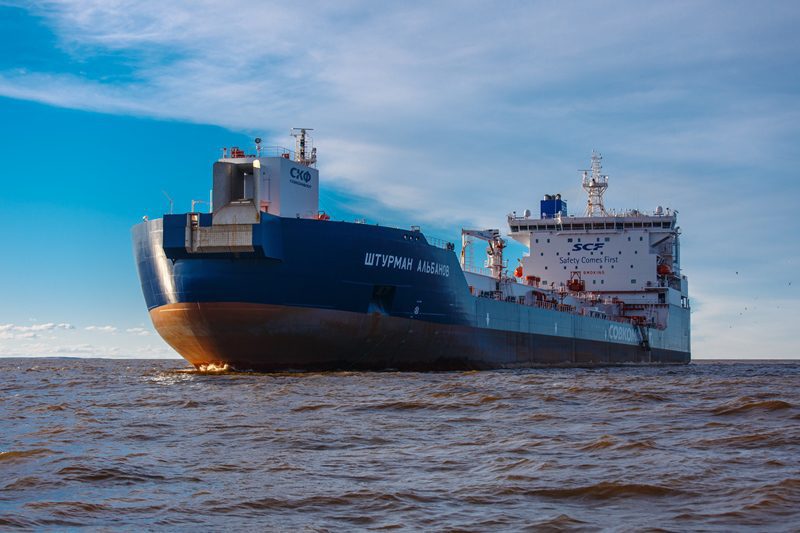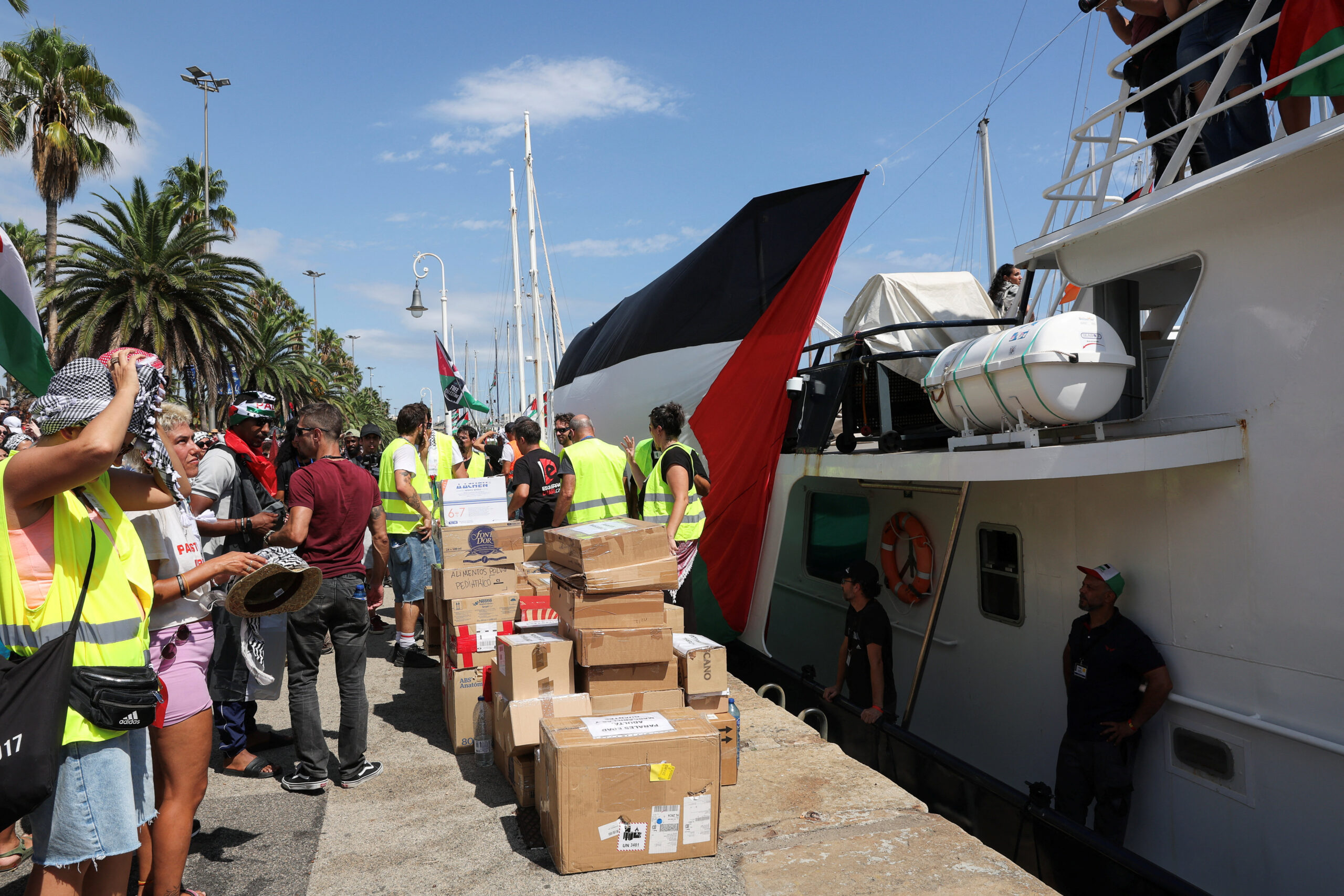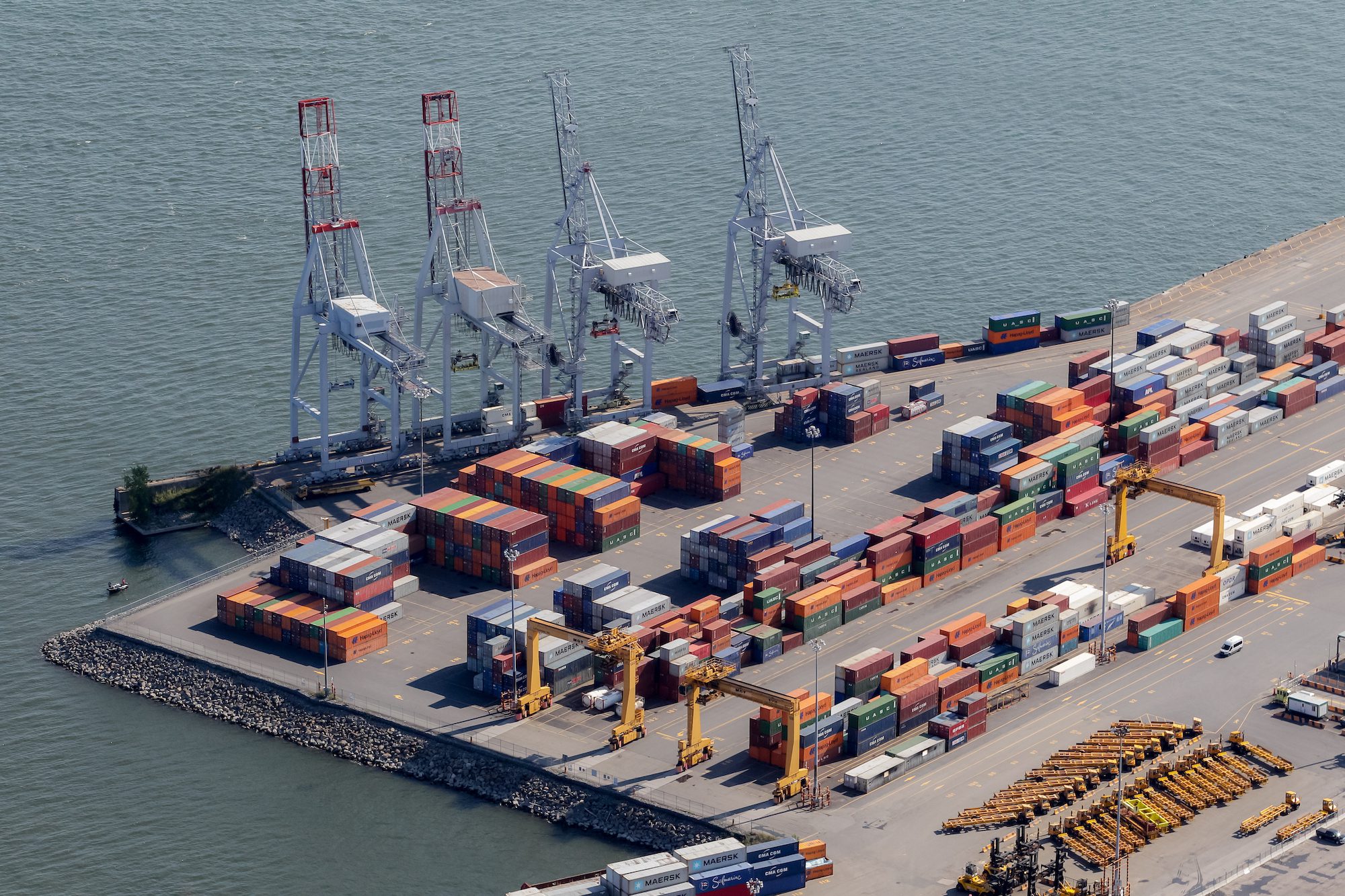The Russian-flagged Shturman Albanov is homeported in St. Petersburg, Russia.
A Russian arctic shuttle tanker has been certified in compliance with the International Maritime Organization’s upcoming Polar Code regulations for the improved safety of ships operating in the polar regions.
The Shturman Albanov received a Polar Ship Certificate issued by the Russian Maritime Register of Shipping on December 22, 2016 . The certificate confirms the vessel is in compliance with the requirements of the International Code for Ships Operating in Polar Waters, more commonly referred to as the Polar Code.
Update: An earlier version of this story incorrectly said the Shturman Albanov was the first ship certified in compliance with the Polar Code, however, as our friends at DNV GL point out, there have been at least two vessels certified in compliance with the Code already – the AHTS Magne Viking, owned by Viking Supply Ships, and the platform survey vessel, MV Stril Polar, which is owned by Simon Møkster Shipping AS.
Shturman Albanov is the lead ship in a series of Arctic shuttle tankers ordered by Sovcomflot Group under a long-term contract with Gazprom Neft. They are designed to carry crude oil year-round from the Yamal Peninsula (YNAD) to the port of Murmansk via portions of the Northern Sea Route, including the Gulf of Ob, Kara Sea, and Barents Sea. Each tanker in the series has deadweight of approximately 42,000 tonnes (Shturman Albanov: 41,454.5 tonnes) and designated ice class Arc7 by the Russian Maritime Register of Shipping (RS), allowing them to operate in temperatures down to –45°?.
Shturman Albanov actually entered service in September. The vessel’s propulsion system consists of two Azipod thrusters with a total capacity of 22 MW, which provides a high ice-breaking capability and good maneuverability when sailing through ice drifts and heavy ice fields.
SEE ALSO: New Oil Tanker Begins Year-Round Service in Russian Arctic
The landmark Polar Code was adopted by the IMO’s Maritime Safety Committee in 2014. The Code addresses risks and hazards specific to the arctic and antarctic environments, such as ice, remoteness and rapidly changing and severe weather conditions. It also provides goals and functional requirements related to ship design, construction, equipment, operations, training, and search and rescue. Entry into force is set for January 1, 2017 for ships constructed after that date and no later than the date of the first renewal or intermediate survey after 1 January 2018 for existing ships.
The Polar Code will be mandatory under both International Convention for the Safety of Life at Sea (SOLAS) and the International Convention for the Prevention of Pollution from Ships (MARPOL).

 Join The Club
Join The Club











